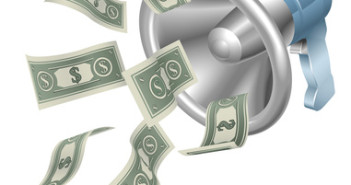After yesterday’s consolidation, the underlying upward trend in the greenback has reasserted itself, with the DXY surging to a fresh 12-year high and weighing on overall risk appetite in financial markets. Though the extension of last Friday’s post NFP gains in the DXY have lacked a fresh catalyst, FOMC members on the speaking circuit have been reinforcing the notion a June rate hike is in the pull position when discussing interest rate liftoff, with Dallas Fed President Fisher warning waiting too long to raise rates may force more aggressive policy action further down the road.
The ECB’s Public Sector Purchasing Program (PSPP) continues to put downward pressure on bond yields, which in turn is reinforcing the bid tone driving the greenback higher against the euro, but also against the other majors. Yields on the German 10-year bund have slipped further to 0.27%, with the 7-year turning negative and treading precariously close to the ECB’s deposit rate. The movements in yields have sparked some worries the Bundesbank may struggle to meet its buying quotas under the program, given the availability of assets to purchase with yields above the ECB deposit rate. As investors gobble up European debt that is eligible for purchase under the PSPP scheme, market participants are at the same time hedging the currency risk inherent in their investment decision, putting continued downward pressure on EURUSD, as the pair slides into the mid-1.07s touching its lowest level since September of 2003.
Asian bourses struggled under the weight of the greenback during their overnight session, with the Nikkei unable to take advantage of the highest level in USDJPY since July 2007 as the pair briefly made a test of 122 before being rebuked into the mid-121s. The Nikkei finished its session off by 0.67%, while the Shanghai Comp fell by 0.46% after Chinese CPI data for February came in hotter than anticipated for the month of February. The 1.4% rise in consumer prices compared to twelve months ago bested the median analyst estimate that called for a gain of 0.9%, and is up from the 0.8% that was registered in January. While the initial print dented risk appetite on the theory that resurgence in Chinese inflation would constrain policymakers’ abilities to tactically protect the economy’s growth objectives, we will have to wait for March’s figures in order to determine how large the distortions from the Lunar New Year were.
As we get prepared for the North American open, the bears have full control over the equity futures’ tape as the surging USD is prompting market participants to pare back risk appetite. The overall dollar-bullishness has done little to support commodity prices, with comments from the Kuwaiti OPEC governor expecting the organization to extend current policy at the next meeting on June 5thadding fuel to the fire, pushing front-month WTI back below the $50 level. Sagging commodity prices and a generally USD-supportive investment climate has weighed on the loonie this morning, with price action reinforcing the upward break of the technical pennant formation which formed in the consolidative phase of USDCAD from mid-January onward. While US retail sales and Canadian employment figures later this week will be the main economic catalysts that could sway price action for the USDCAD pair, we would caution that in absence of data challenging the status quo which reinforces the narrative of monetary policy divergence between the Fed and Bank of Canada, the technical price action suggests there is likely more pain to come for the loonie.
Further reading:
EURUSD, USDJPY, GBPUSD Technical analysis, pivot points – Mar. 10 2015
GBP/EUR crosses 1.40 – Good news for UK expats, Spanish tourism



